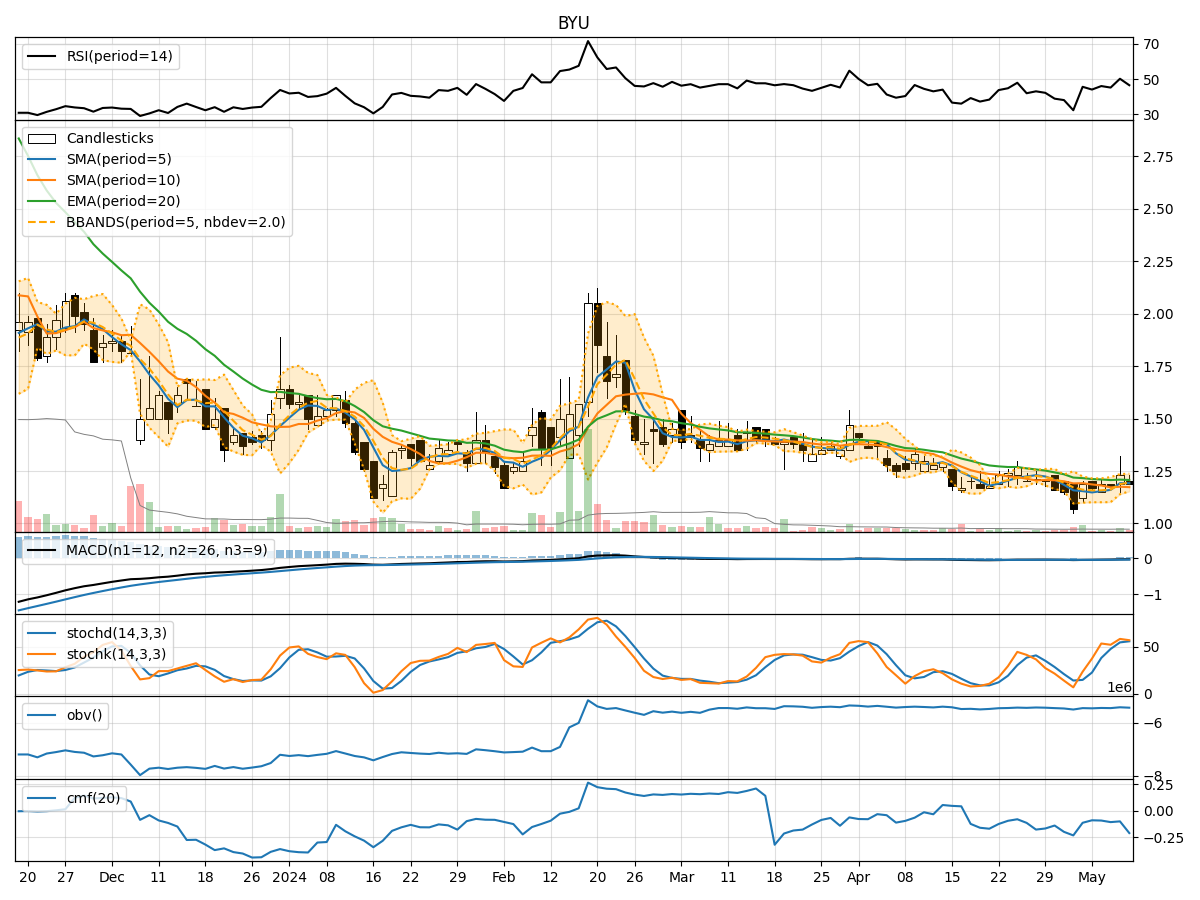
Technical Analysis of BYU 2024-05-10
Overview:
In analyzing the technical indicators for BYU stock over the last 5 days, we will delve into the trends, momentum, volatility, and volume indicators to provide a comprehensive outlook on the possible stock price movement in the coming days. By examining these key indicators, we aim to offer valuable insights and predictions for potential investors.
Trend Analysis:
- Moving Averages (MA): The 5-day Moving Average (MA) has been fluctuating around the closing prices, indicating short-term price trends. The Simple Moving Average (SMA) and Exponential Moving Average (EMA) show a downward trend, suggesting a bearish sentiment in the short to medium term.
- Moving Average Convergence Divergence (MACD): The MACD line has been consistently negative, with the MACD Histogram also showing a downward trend. This indicates a bearish momentum in the stock price.
Momentum Analysis:
- Relative Strength Index (RSI): The RSI values have been hovering around the mid-range, indicating a neutral sentiment in terms of momentum.
- Stochastic Oscillator: Both %K and %D values have been fluctuating, suggesting indecision in the market momentum.
- Williams %R (Willams %R): The Williams %R values have been negative, indicating a potential oversold condition.
Volatility Analysis:
- Bollinger Bands (BB): The Bollinger Bands have shown narrowing bands, indicating decreasing volatility in the stock price.
- Bollinger Band %B (BB %B): The %B values have been relatively low, suggesting a potential consolidation phase.
Volume Analysis:
- On-Balance Volume (OBV): The OBV values have been fluctuating, indicating mixed buying and selling pressure.
- Chaikin Money Flow (CMF): The CMF values have been negative, suggesting a bearish money flow in the stock.
Key Observations:
- The trend indicators point towards a bearish sentiment in the short to medium term.
- Momentum indicators show a neutral stance with a slight inclination towards oversold conditions.
- Volatility indicators suggest decreasing volatility and a potential consolidation phase.
- Volume indicators indicate mixed buying and selling pressure with a bearish money flow.
Conclusion:
Based on the analysis of the technical indicators, the stock price of BYU is likely to experience a downward movement in the coming days. The bearish trend, coupled with neutral to bearish momentum and decreasing volatility, indicates a potential consolidation phase with a downward bias. Investors should exercise caution and consider waiting for more definitive signals before making any trading decisions.